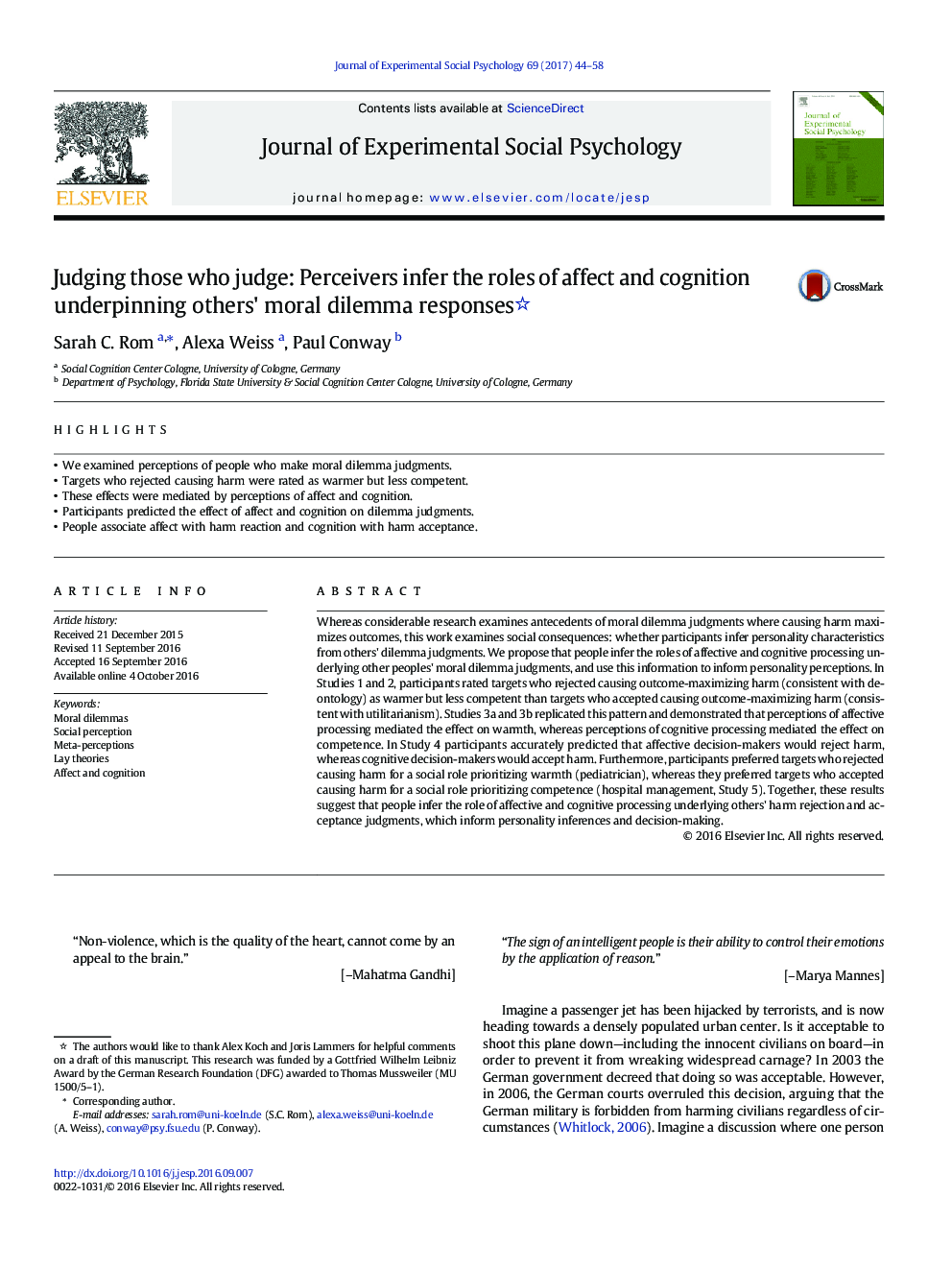| کد مقاله | کد نشریه | سال انتشار | مقاله انگلیسی | نسخه تمام متن |
|---|---|---|---|---|
| 5045713 | 1475854 | 2017 | 15 صفحه PDF | دانلود رایگان |
- We examined perceptions of people who make moral dilemma judgments.
- Targets who rejected causing harm were rated as warmer but less competent.
- These effects were mediated by perceptions of affect and cognition.
- Participants predicted the effect of affect and cognition on dilemma judgments.
- People associate affect with harm reaction and cognition with harm acceptance.
Whereas considerable research examines antecedents of moral dilemma judgments where causing harm maximizes outcomes, this work examines social consequences: whether participants infer personality characteristics from others' dilemma judgments. We propose that people infer the roles of affective and cognitive processing underlying other peoples' moral dilemma judgments, and use this information to inform personality perceptions. In Studies 1 and 2, participants rated targets who rejected causing outcome-maximizing harm (consistent with deontology) as warmer but less competent than targets who accepted causing outcome-maximizing harm (consistent with utilitarianism). Studies 3a and 3b replicated this pattern and demonstrated that perceptions of affective processing mediated the effect on warmth, whereas perceptions of cognitive processing mediated the effect on competence. In Study 4 participants accurately predicted that affective decision-makers would reject harm, whereas cognitive decision-makers would accept harm. Furthermore, participants preferred targets who rejected causing harm for a social role prioritizing warmth (pediatrician), whereas they preferred targets who accepted causing harm for a social role prioritizing competence (hospital management, Study 5). Together, these results suggest that people infer the role of affective and cognitive processing underlying others' harm rejection and acceptance judgments, which inform personality inferences and decision-making.
Journal: Journal of Experimental Social Psychology - Volume 69, March 2017, Pages 44-58
